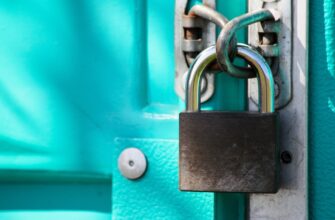- Introduction: The Critical Need for Offline Crypto Security
- What is an Offline Crypto Wallet?
- Why Offline Protection is Non-Negotiable
- Step-by-Step Guide to Fortifying Your Offline Wallet
- 1. Select Your Cold Storage Medium
- 2. Generate Keys in Complete Isolation
- 3. Implement Multi-Layer Backup Strategy
- 4. Fortify Physical Security
- 5. Maintain Operational Discipline
- Advanced Protection Tactics
- FAQ: Offline Wallet Security Explained
- Q: Can hardware wallets be hacked?
- Q: How often should I check my offline wallet?
- Q: Are paper wallets obsolete?
- Q: What if my hardware wallet breaks?
- Q: Is biometric security effective for cold storage?
- Conclusion: Security as a Continuous Practice
Introduction: The Critical Need for Offline Crypto Security
With cryptocurrency thefts exceeding $3.8 billion in 2022 alone (Chainalysis), securing digital assets has never been more urgent. Offline storage—often called “cold storage”—remains the gold standard for protecting crypto from hackers. This comprehensive guide reveals professional strategies to bulletproof your offline wallet against both digital threats and physical vulnerabilities.
What is an Offline Crypto Wallet?
An offline wallet stores cryptocurrency keys completely disconnected from the internet, eliminating exposure to remote attacks. Unlike vulnerable “hot wallets” (connected online), offline solutions include:
- Hardware wallets: Physical devices like Ledger or Trezor
- Paper wallets: Printed QR codes of keys
- Metal backups: Engraved seed phrases on fireproof plates
- Air-gapped devices: Offline computers generating keys
Why Offline Protection is Non-Negotiable
Online wallets face constant siege: phishing scams, malware, and exchange breaches. Offline storage neutralizes these threats but introduces physical risks requiring mitigation:
- Physical theft or loss
- Environmental damage (fire/water)
- Human error (misplaced backups)
- Obsolescence of storage media
Step-by-Step Guide to Fortifying Your Offline Wallet
1. Select Your Cold Storage Medium
- Hardware wallets: Opt for tamper-proof devices with secure elements (e.g., Ledger Nano X)
- Paper alternatives: Use acid-free paper or stainless steel plates like Cryptosteel
- Avoid digital screenshots: Never store keys on cloud services or devices
2. Generate Keys in Complete Isolation
- Boot from a Linux USB on a never-online computer
- Use open-source tools like Electrum in offline mode
- Disable Wi-Fi/Bluetooth during setup
3. Implement Multi-Layer Backup Strategy
- Rule of 3-2-1: 3 copies, 2 media types, 1 off-site
- Example: Metal backup at home + paper copy in bank vault + encrypted USB with trusted relative
- Test restores annually
4. Fortify Physical Security
- Store in UL-rated fireproof safes ($150+ models)
- Use decoy wallets with minimal funds
- Never disclose storage locations
5. Maintain Operational Discipline
- Verify receiving addresses on hardware wallet screens
- Update firmware via manufacturer apps only
- Wear privacy screens during transactions
Advanced Protection Tactics
- Multi-signature wallets: Require 2-3 devices to authorize transactions
- Passphrase protection: Add a 25th custom word to your seed phrase
- Geographic distribution: Split backup fragments across locations
- Inheritance protocols</strong: Use services like Casa Covenant for secure beneficiary access
FAQ: Offline Wallet Security Explained
Q: Can hardware wallets be hacked?
A: While highly secure, physical compromise is possible if stolen AND you lack passphrase protection. Always combine with backups.
Q: How often should I check my offline wallet?
A: Only when transacting. Quarterly balance checks via blockchain explorers (without exposing keys) are sufficient.
Q: Are paper wallets obsolete?
A: Not entirely, but metal backups are superior for durability. Paper remains viable if laminated and stored properly.
Q: What if my hardware wallet breaks?
A: Your seed phrase is the true backup. Replace the device and restore using your securely stored recovery phrase.
Q: Is biometric security effective for cold storage?
A: Fingerprint/Face ID only protects device access—not your seed phrase. Never rely solely on biometrics.
Conclusion: Security as a Continuous Practice
Guarding crypto offline isn’t a one-time action but an ongoing discipline. By implementing these layered strategies—from air-gapped key generation to geographically distributed backups—you create a security infrastructure that withstands both digital and physical threats. Remember: In cryptocurrency, your keys are your kingdom. Guard them with the seriousness they deserve.








